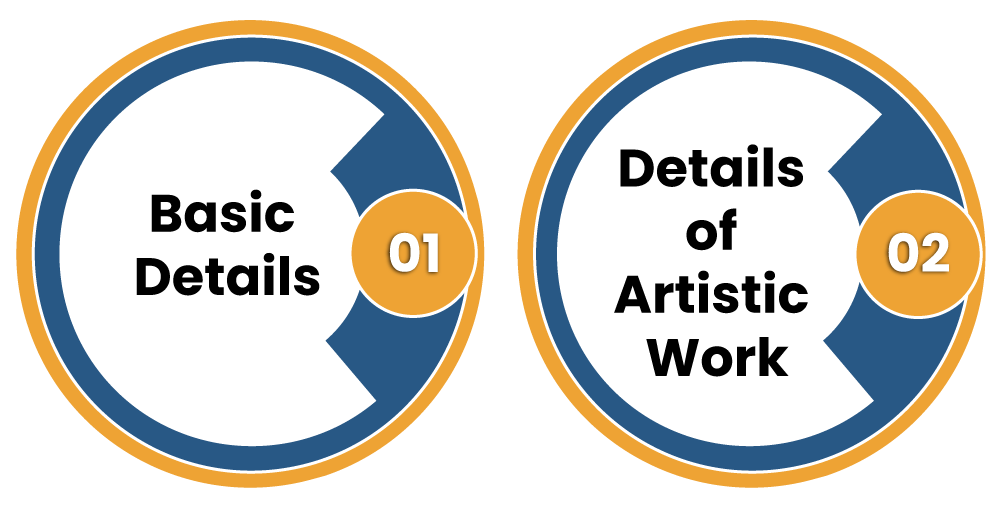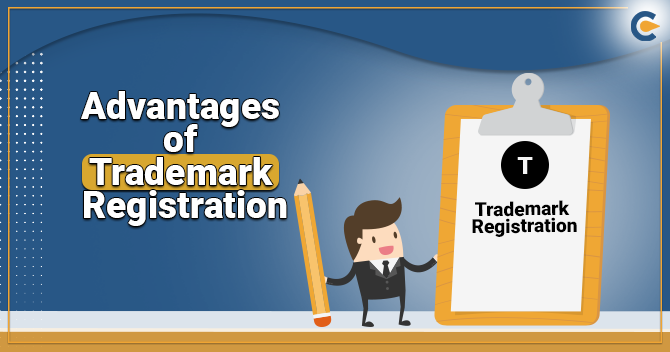When we talk about protection of laws related to copyright in India, they are pretty vague. There are a lot of defects in the Copyright Protection Act. Initially, they state that registration is not compulsory but again they state that you need Registration Certificate as a concrete proof in case of any infringement.
There is another provision in the Act, which is unusual and is the only provision that establishes a connection between Trademark and Copyright. Section 45 of the Trademark Act states that in case of artistic work to obtain a copyright certificate, the owner of that work has to submit a Trademark Clearance Certificate along with other related documents.
Basic Rights on Artistic Works
Before we get into the process for attaining a Trademark Clearance Certificate, let’s seethe basics right on “artistic work.”
Artistic Works are defined under Section 2(c) of the Copyright Actwhich provides a list of works that are copyrightable-
- Sculpture
- Photography
- Engraved art
- Drawings such as diagram, chart, maps or plan
- Artistic Craftsmanship
- Architecture work
The term Artistic Works consists of both 2-dimensional as well as 3-dimensional work. But then again, if any particular work is for any profitable purpose in relation to goods & services then the Act directs to acquire Trademark Clearance Certificate also known as Search Certificate from the office of Trademark Registry. This whole process is covered under Section 45 of the Trademark Act.
Design Registration VS. Artistic Work
Such instances also occur, when a work is subjected to protection under both Copyright and Designs act[1]. For example: A painting by a renowned artist being an artistic work is entitled to enjoy the protection under the umbrella of Copyright Act, and simultaneously, if the same painting is used for the purpose of industrial application, like being printed on an article, then the painting can also be entitled to seek protection under the Designs Act too.
One such landmark case, that put forward the much-needed clarity regarding the issue between the artistic work as per the provisions of the copyright Act, and artistic work as design as per the provisions of the Designs act is “Microfibres Inc vs. Girdhar & Co & Anr (2009)”.
The clarity in the case was generated by a division bench of Delhi High Court. The Delhi High Court held that in the cases of original piece of artistic work, the author of the work is entitled to enjoy protection as per the provisions of the Copyright Act.
In Holland Company LP vs. SP Industries (2017), it was held by the Delhi High Court that when an artistic work is created to fulfil an industrial purpose, then it is considered as a design and can be registered under both the Designs Act and the Copyright Act.
What is a Trademark Clearance Certificate or TM-C?
Trademark clearance certificates also known as search certificates that are issued by trademark registry. It states that the anticipated artistic work is not deceivingly similar or identical to any registered trademark. The work of trademark clearance Certificate is also to check that no such applications or claims are there for the specific artistic work by anybody else.
Why is there Requirement of TM-C for Artistic Work and not for any other Copyrightable Works?
Business persons uninterruptedly struggle to promote their products and register the logo of the brand in all their workings. The designed logo is a standard example of artistic work. So, this particular logo can be safeguarded under two IPR rules- Trademark as well as Copyrights.
The main aim of trademark registration is to ensure that there no confusion in the minds of customers of the two possessions. Trademark will protect the logo only in the classification of the Goods & Services, but copyrights protects the artistic design logo from being copied or used without prior permission irrespective of whether it is being used as brand.
Hence, as an ultimate result of dual protection, both by trademark and copyright, larger protections is given to the artistic work, the work that is original in nature and public domain does not have the access to it.
However, the major question that pops up in our mind is that why only the artistic work is given dual protection? The reason that supports this fact is the other works that can obtain copyrights such as cinematography, videography, sound recordings etc, do not establish any sort of connection with the Trademark.
In general, when we consider logos or designs, they represent certain business identities and shall be protected as trademarks. They hold an original element of creativity, that is why it also necessary to allot them the copyright. Only the works that includes the element of creativity and originality is subjected to copyright protection.
Procedure to Obtain Trademark Clearance Certificate
If a person desires to obtain a trademark clearance certificate, he or she is required to file an application TM- C along with the supporting documents.
The following particulars are to be filled-


Basic Details
- Name and address of the applicant
- Contact details of the applicant such mobile number as well as email address
- Nature of the applicant- Individual or the company
- If the application is filed by the agent then-
- Name and address of the agent
- Contact details of the agent such as mobile number as well as email address
- Authorization or power of attorney
- Nature of the agent- whether a trademark agent, attorney or an created attorney
Details of the Artistic Work
3 copies of image or logo whose dimension should be 33cm*20 cm
Note- Details of the person submitting the document should also be mentioned.
What is the Mode of Filing for Trademark Clearance Certificate?
There are two different modes using which you can file for Trademark Clearance Certificate:-


Manual Filing
If you have selected ‘Manual Filling’ then you have to individually move and deliver your application to the Registrar Office of Trade Marks for registration situated in the important cities of India like Delhi, Ahmedabad, Kolkata, Mumbai, and Chennai.
Once the person has applied for the registration to the registrar office of Trademarks, the said person has to wait for a period of at least 15 -20 days in order to receive the receipt that the application has been acknowledged.
E-Filing
In case of an E-Filing system, you will receive receipt of acknowledgement instantly from the government in their official website. Once the acknowledgement certificate has been received by the said person, he or she is eligible to use the trademark.
What is the Fees Structure to Fill the Form TM-C?
According to the provisions of the first schedule of the Trademark Rules, 2017-
| Form- TM C to be filled with the given fees | Physical Filling | E-Filing |
| Application for search and issue of a certificate under Rule 22(1) | 10,000 | 9,000 |
| Application for an advanced search and issuance of a certificate under Rule 22 (3) | Not allowed | 30,000 |
After the filing of the application along with supporting documents and the required fees, the Registrar is supposed to conduct research regarding the application and has to provide the results of the research or issue the certificate within 30 days from application.
If no identical or similar trademark has been found by the registrar throughout the research, then the registrar is bound to issue the trademark clearance certificate. However, the Registrar may summon the applicant as and when he wants for the statement of requirements, and in case the requirements are not addressed by the applicant within two months from the date of calling, the request on Form TM-C will be considered abandoned.
Cancellation of the Trademark Clearance Certificate
The Registrar is eligible to cancel the Trademark Clearance Certificate after the notice has been sent to the applicant mentioning the grounds upon which the Registrar has intended to cancel the certificate, provided that rational opportunity of being heard is given to the applicant.
Conflict Check Procedure done by the Registrar
In India, before the registration of an artistic work, which can also be used as a Trademark, the registrar is required to issue a certificate stating that there is no existing trademark on record that resemble to the trademark which has been proposed to be copyrighted. Once it has been confirmed by the registrar that no similar trademarks on record exist, only then the artistic work can be filed for registration of copyright.
Hence, there is no actual process under the trademark law by trademark authorities in India to examine the copyright records while scrutinizing trademark application.
Even if the copyright records are scrutinized by the trademark authorities, it is quite impossible to keep note of copyrights that has not been registered earlier. Furthermore, in artistic works that may accumulate in original works as soon as they come into existence which implies prior copyright over any artistic logo. There are practically few ways to prevent consequent identical or similar trademark logos from acquiring registration in favor of others. This should be considered as a copyright owner lapse to keep vigilance on future trademark applications.
Conclusion
It has been established that in order to apply for copyright registration, the applicant is required to obtain trademark clearance certificate as per section 45 of the Act, and once the certificate has been obtained; the process of obtaining copyright for artistic work can be commenced. Still, the Trademark Clearance Certificate is not required, when such works are non – commercial and is for educational purpose.
Read our article:What Are the Trademark Limitation under the Regime of Trademark Law











